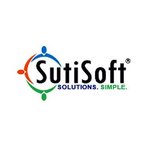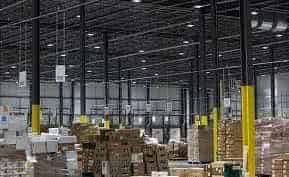Accounting
The Real Impact of Expense Software

Expense management is a key area of business where technology brings double-digit cost reductions. However, surprisingly, only a few companies use IT to manage spend. Around 40-70% of businesses rely on spreadsheets and manual systems to calculate expenses. This results in huge loss and poor compliance.
Cloud eliminates barriers
![]() Why aren’t there more businesses considering expense management solutions? Some setbacks that critics will attest to are due to the systems’ back-end integration, cost and installation time, deploying an on-premise system and flexibility.
Why aren’t there more businesses considering expense management solutions? Some setbacks that critics will attest to are due to the systems’ back-end integration, cost and installation time, deploying an on-premise system and flexibility.
However, with the advent of cloud-based solutions, all technical barriers are now a thing of past. Cloud-based expense solutions continue to make double-digit gains in the industry. Quick implementation, reduced adoption cycles and decreased time constraints make management far burdensome. And, the transition to cloud is unstoppable. If you are not considering cloud, then you are making a serious mistake.
Integrating expense solution into back-end system is one of the toughest challenges tackled by the industry. Nonetheless, cloud solutions are making organizations integrate various external systems, including credit card and corporate card systems among other online travel services to make their work get done faster. Here’s the impact that expense software can bring to your business.
Off-the-peg integrations
![]() One key attribute when choosing an expense management solution is the ability to use data from external sources with off-the-peg integrations. Amongst all integrations, credit card and corporate card integrations should be at the top of the priority list for businesses. Card integration helps businesses protect against fraudulent payments by matching receipts with the purchases to avoid payment duplication. The solution that supports off-the-peg integrations brings forth intangible benefits when compared to other cloud solutions.
One key attribute when choosing an expense management solution is the ability to use data from external sources with off-the-peg integrations. Amongst all integrations, credit card and corporate card integrations should be at the top of the priority list for businesses. Card integration helps businesses protect against fraudulent payments by matching receipts with the purchases to avoid payment duplication. The solution that supports off-the-peg integrations brings forth intangible benefits when compared to other cloud solutions.
Creating a user-friendly experience
![]() An intuitive interface is one of the key areas of focus in the expense management industry. Moving from desktop to mobile apps is seen as the major shift in the expense market. Application UIs should be designed in an intuitive way rather than the conventional click-heavy UIs of corporate applications. Mobile optimization proves to be key when deciding which expense software is best for your business.
An intuitive interface is one of the key areas of focus in the expense management industry. Moving from desktop to mobile apps is seen as the major shift in the expense market. Application UIs should be designed in an intuitive way rather than the conventional click-heavy UIs of corporate applications. Mobile optimization proves to be key when deciding which expense software is best for your business.
Mobile capture
![]() Mobility has continued to gain a larger momentum amongst organizations. It is evident that many of businesses have embraced the new direction of mobile along with its added benefits. Certainly better aligning with both desktop and laptop has become crucial for business applications.
Mobility has continued to gain a larger momentum amongst organizations. It is evident that many of businesses have embraced the new direction of mobile along with its added benefits. Certainly better aligning with both desktop and laptop has become crucial for business applications.
However, the move to mobile applications has created new criteria to look at when considering T & E solutions. The very basic application should be able to capture the receipt using the mobile device and enter expense details using the mobile app. Some interfaces may use optical character recognition and barcode readers to input details right from the receipt to the application. And, the sophisticated application will use device sensors to support various functions such as voice recognition, calendar entries, and GPS. Also, the mobile device has changed the way business users view and approve expenses while on-the-go.
Cost efficient
![]() While the expense solution offers many cost and time-saving benefits, it will automatically reduce the number of hours spent reconciling receipts into spreadsheets and ultimately improves employee productivity and loyalty. Usually, compliance is associated with unnecessary costs and work, but the T & E system can benefit businesses from compliance, especially around VAT repayments. Approximately 60% of VAT on expenses goes unclaimed. By automating the reporting process, businesses can reclaim more VAT and get rid of hidden costs.
While the expense solution offers many cost and time-saving benefits, it will automatically reduce the number of hours spent reconciling receipts into spreadsheets and ultimately improves employee productivity and loyalty. Usually, compliance is associated with unnecessary costs and work, but the T & E system can benefit businesses from compliance, especially around VAT repayments. Approximately 60% of VAT on expenses goes unclaimed. By automating the reporting process, businesses can reclaim more VAT and get rid of hidden costs.
Incorporating external apps
![]() Your expense system should not only enable businesses to enforce corporate policies but should link to third party systems. Integrations allow a financial controller to review the amount spent on corporate cards, top vendors, VAT, additional costs or fraudulent transactions. Also, you can track the expenses by client, project and expense type to see exactly where the costs arise. External apps integration has become a standard for major ERP applications.
Your expense system should not only enable businesses to enforce corporate policies but should link to third party systems. Integrations allow a financial controller to review the amount spent on corporate cards, top vendors, VAT, additional costs or fraudulent transactions. Also, you can track the expenses by client, project and expense type to see exactly where the costs arise. External apps integration has become a standard for major ERP applications.
Upcoming Trends
Future expense management solutions should be able to integrate with wearable such as smartwatches to enter and track data and voice recognition for input. Expense management is one of the areas where business can get real-time benefits, especially when you consider a cloud-based solution with an intuitive interface and mobile application for data capture. Additionally, future expense solutions will make use of artificial intelligence to flag expense line items by creating certain rules in the system. Incorporating all the above said features will make the resultant application more powerful and dynamic.
Finding the right software can be daunting but we’re here to help. Download your FREE report and let’s guide you towards the right solution.
[Image courtesy of Pixabay]






